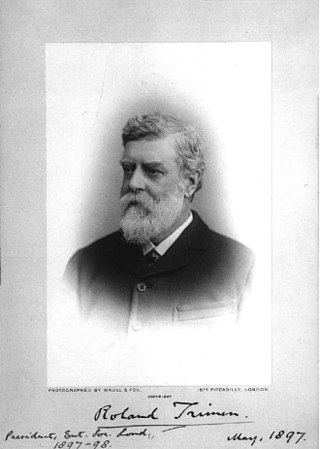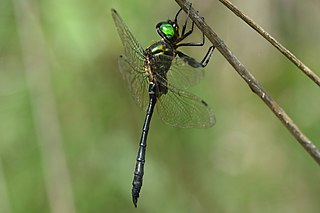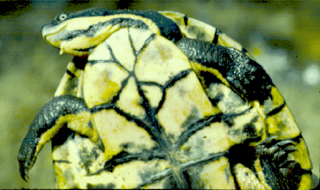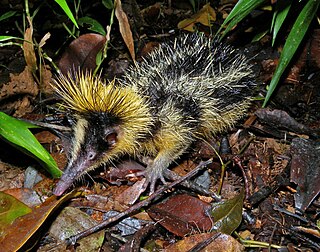
Columbidae is a bird family consisting of doves and pigeons. It is the only family in the order Columbiformes. These are stout-bodied birds with short necks and short slender bills that in some species feature fleshy ceres. They primarily feed on plants, and can be taxonomically divided amongst granivores, that feed mostly on the ground on seeds, and frugivores, that feed mostly on fruits, from branches. The family occurs worldwide, often in close proximity with humans, but the greatest variety is in the Indomalayan and Australasian realms.

Wrens are a family of brown passerine birds in the predominantly New World family Troglodytidae. The family includes 88 species divided into 19 genera. Only the Eurasian wren occurs in the Old World, where, in Anglophone regions, it is commonly known simply as the "wren", as it is the originator of the name. The name wren has been applied to other, unrelated birds, particularly the New Zealand wrens (Acanthisittidae) and the Australian wrens (Maluridae).

Plagiaulacida is a group of extinct multituberculate mammals. Multituberculates were among the most common mammals of the Mesozoic, "the age of the dinosaurs". Plagiaulacids are a paraphyletic grouping, containing all multituberculates that lie outside of the advanced group Cimolodonta. They ranged from the Middle Jurassic Period to the early Late Cretaceous of the northern hemisphere. During the Cenomanian, they were replaced by the more advanced cimolodontans.

The mousebirds are birds in the order Coliiformes. They are the sister group to the clade Cavitaves, which includes the Leptosomiformes, Trogoniformes (trogons), Bucerotiformes, Piciformes and Coraciformes. This group is now confined to sub-Saharan Africa, and it is the only bird order confined entirely to that continent, with the possible exception of turacos which are considered by some as the distinct order Musophagiformes, and the cuckoo roller, which is the only member of the order Leptosomiformes, and which is found in Madagascar but not mainland Africa. Mousebirds had a wider range in the Paleogene, with a widespread distribution in Europe and North America during the Paleocene.

An argus, or argus pheasant, is a member of a clade in the tribe Pavonini of the family Phasianidae, containing two species of bird that are closely related to peafowl.

Roland Trimen FRS was a British-South African naturalist, best known for South African Butterflies (1887–89), a collaborative work with Colonel James Henry Bowker. He was among the first entomologists to investigate mimicry and polymorphism in butterflies and their restriction to females. He also collaborated with Charles Darwin to study the pollination of Disa orchids.

Corduliidae, also knowns as the emeralds, emerald dragonflies, or green-eyed skimmers, is a family of dragonflies. These dragonflies are usually black or dark brown with areas of metallic green or yellow, and most of them have large, emerald-green eyes. The larvae are black, hairy-looking, and usually semiaquatic. This family include species called "baskettails", "emeralds", "sundragons", "shadowdragons", and "boghaunters". They are not uncommon and are found nearly worldwide, but some individual species are quite rare. Hine's emerald dragonfly, for example, is an endangered species in the United States.

Thyrsopteris is a genus of tree fern. It contains a single living species, Thyrsopteris elegans, endemic to the Juan Fernandez Archipelago off the coast of Chile. Thyrsopteris is the only genus in the family Thyrsopteridaceae in the Pteridophyte Phylogeny Group classification of 2016. Alternatively, the genus may be placed in the subfamily Thyrsopteridoideae of a more broadly defined family Cyatheaceae, the family placement used in Plants of the World Online as of November 2019. The oldest records of the genus are the species Thyrsopteris cretacea and Thyrsopteris cyathindusia which were described from the Burmese amber of Myanmar, dating to the Cenomanian of the Cretaceous period, around 99 million years ago. Other fossil species include Thyrsopteris antiqua from the Upper Cretaceous of Chile and Thyrsopteris shenii from the Paleogene of King George Island, Antarctica A thyrsopterid rachis is also known from the Upper Cretaceous of Japan.

Strix is a genus of owls in the typical owl family (Strigidae), one of the two generally accepted living families of owls, with the other being the barn-owl (Tytonidae). Common names are earless owls or wood owls, though they are not the only owls without ear tufts, and "wood owl" is also used as a more generic name for forest-dwelling owls. Neotropical birds in the genus Ciccaba are sometimes included in Strix.
The weasel sharks are a family, the Hemigaleidae, of ground sharks found from the eastern Atlantic Ocean to the continental Indo-Pacific. They are found in shallow coastal waters to a depth of 100 m (330 ft).

Macrothele is a genus of mygalomorph spiders in the family Macrothelidae, and was first described by A. Ausserer in 1871. Most species occur in Asia, from India to Japan, and Java, with five found in Africa, and two in Europe. The name is derived from Ancient Greek μακρός ("makro-"), meaning "big", and θηλή ("thele"), referring to the spinnerets.

The genus Hypsugo contains many bats referred to as pipistrelles or pipistrelle bats. They belong to the family Vespertilionidae or vesper bats. They are primarily found throughout Asia, the Middle East, Mediterranean Europe, and North Africa, with a single (debated) species in Sub-Saharan Africa.

Hadrianus is an extinct genus of tortoise belonging to the Testudinidae found in the United States, the Yolomécatl Formation of Mexico, the Alai Beds of Kyrgyzstan and Spain and believed to be the oldest true tortoise known. The genus is thought to be closely related to the genus Manouria. The genus may have evolved in the subtropics of Asia and subsequently migrated to North America and Europe. Evangelos Vlachos (2018) reassessed the North American species attributed to the genus, and determined only two as accepted namely H. corsoni & H. majusculus. The remaining species were identified as either junior synonyms, moved to other genera or considered nomen dubium do to incomplete fossils.

The Myuchelys is a genus of turtles, the Australian saw-shelled turtles, in the family Chelidae and subfamily Chelodininae. They inhabit the headwaters and tributaries of rivers within their range and this led to the name Myuchelys, which is formed from the Aboriginal word myuna meaning clear water and the Greek chelys meaning turtle. They have a short neck and the intergular scute completely separates the gular scutes. They have no alveolar ridge separating them from the snapping turtles of the genus Elseya.

Olivella, common name the dwarf olives, is a genus of small predatory sea snails, marine gastropod molluscs in the subfamily Olivellinae of the family Olividae, the olives. Olivella is the type genus of the family.

Euperipatoides is a genus of ovoviviparous velvet worms in the family Peripatopsidae. All species in this genus have 15 pairs of legs in both sexes. All species are found in New South Wales, Australia. E. rowelli is also found in the Australian Capital Territory.

Hemicentetes is a genus of tenrec with two species, present on the island of Madagascar.
Kouriogenys is a genus of extinct mammal from the Early Cretaceous of southern England. The type and only species was originally described as Spalacotherium minus by Richard Owen in 1871 for a dentary with teeth from the Berriasian Lulworth Formation, although it was given its own genus in 2012 by Brian Davis. The genus name is taken from the Ancient Greek "youthful" and "jaw" in reference to the replacement method of the premolars. Kouriogenys is closely related to coexisting genera Peramus and Peramuroides, and along with other genera these make up the family Peramuridae, a group of extinct zatherians.
Chlidonophoridae is a family of brachiopods belonging to the order Terebratulida.















